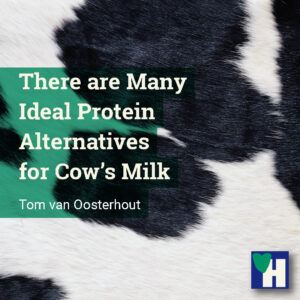
There are many ideal protein alternatives for cow’s milk. When we were young we drank three glasses of cow’s milk a day. And we ate a lot of cheese and yogurt.
Dairy products were considered extremely healthy. Of course, what we ate and drank when we were young brought us where we are now. Nevertheless dairy has lost much of its appeal.
Over the years, many myths about cow’s milk have been dismantled. The ‘wrongs’ of cow’s milk are diverse. Cow’s milk can cause nasty respiratory and digestive problems. And why should you bother to drink cow’s milk when there are so many ideal protein alternatives.
Table of contents
The downfall of animal milk
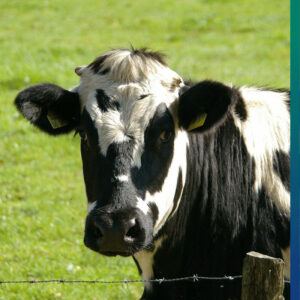
In 2015 the USDA (United States Department of Agriculture) still recommended three glasses of (fat-free or low fat) cow’s milk per day for adults. The question is of course whether their dietary guidelines were free of commercial, agricultural concerns.
The best proof of the downfall of cow’s milk is the decline in its sales. On 12 November 2019 the largest US-based milk producer, Dean Foods, filed for bankruptcy.
Despite the growth of the number of citizens in the US from an estimated 225 million in 1975 to an estimated 325 million in 2019 (+ 44%), the consumption of cow’s milk declined in this period more than 40% . In contrast, the sales of oats milk alone rose in the same period more than 600%.
Milk and calcium deficiency
The most persistent milk myth to be punctured, is the myth that the calcium in milk and yoghurt prevents osteoporosis. Doubts have been cast on de-calcination as a source of osteoporosis. Osteoporosis is probably caused by other dairy products, stress, and the consumption of sugar, Ritalin, and cannabis.
Moreover, there are many alternatives to counter a calcium deficiency. Sources of calcium are sardines, salmon, kale and cereals. Other plant-based milk products, such as almond and oat milk, contain more calcium than cow’s milk.
But be aware, too much calcium can lead to calcification of the arteries and to kidney stones. When you’re 50 years and over, you should not consume more than 2 grams of calcium a day. The USA Office of Dietary Supplements recommends 1 gram per day for healthy adults between the ages 19 and 50.
Milk disturbs respiratory and digestive systems
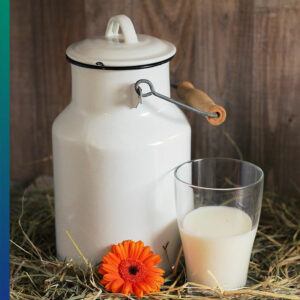
Cows have four stomachs. These enable the cow to convert difficult to digest grass into milk. This milk is meant for newborn cows. When young cows are done with drinking milk, they start to eat grass.
This is how it also works for us humans. Only newborn humans can digest milk. After 2 to 3 years our body is actually no longer suited for milk.
The inability of humans to digest cow’s milk is clear from two problems. Cow’s milk increases the formation of mucus in the respiratory tract. This can cause asthma problems or bronchitis, which in turn can produce all kinds of allergies. Already in 1957, Hannie was forbidden to drink cow’s milk. She was put on a lactose-free diet for three years to counter bronchitis.
The mucus produced by cow’s milk also sticks to the inside of the intestines and thus prevents an undisturbed intake of food. In other words, cow’s milk disturbs the respiratory and digestive systems.
What’s wrong with soy?
Soy as a replacement of cow’s milk is not so good either. Soy is used as animal feedstuff and a source of protein for vegetarians.
However, soy contains disproportionate amounts of estrogen. High levels of estrogen may impair immune systems. Soy milk also aggravates asthma problems, and sticks to the inside of the intestines. With the same unwanted results as with cow’s milk.
Besides, soy has some substantial environmental issues. It is the main cause of the destruction of great tracts of rainforest in Brazil and other parts of the world.
The environmental threats of cow’s milk
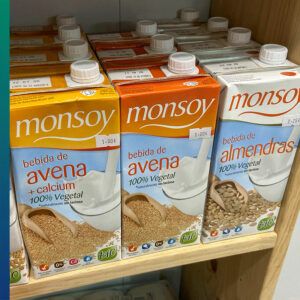
The milk of cows has a very serious impact on the environment as well. Cow’s milk requires a lot of land. Almost ten times more than almond milk. The amount of water used to produce cow’s milk is almost twice as much as is used for the production of almond milk. For oats milk the amount of water used is even more economic. It’s 1/15th of that of cow’s milk.
Compared to other ideal protein alternatives, cow’s milk produces the greatest amount of greenhouse gas (GHG) emissions such as CO2, NOX (27% of cow’s total GHG) and methane (half of cow’s total GHG).
Cows fart and belch methane. In the US alone this counts for 22% of the annual methane emissions. Methane has a global warming potential of almost a 100 times more than carbon dioxide. Nitrous oxide (NOX) has a global warming potential of almost 300 times of carbon dioxide.
Ideal protein alternatives
Apparently a lot is wrong with cow’s milk. However, cow’s milk is an important source of proteins. It’s clear though that there are enough and a large variety of ideal protein alternatives on the market.
If you still want to drink milk, but prefer alternatives, you can buy different types in any organic shop. And even supermarkets offer at present more and more varieties of these alternatives, such as oat, rice, almond, and coconut milk.
These alternatives have other advantages, besides being a protein replacement. They’re all low on sugar and cholesterol. Especially if you choose the ‘non-added-sugar- variety.
Non-milk protein alternatives
Besides, you can always replace all milk type proteins with proteins from nuts, fruits, cereals, and vegetables. Good cereal protein sources are buckwheat, oats, rye, millet, maize (corn), rice, wheat, sorghum, amaranth, and quinoa.
Vegetable sources for protein are lentils, kidney beans, white beans, mung beans, chickpeas, cowpeas, lima beans, pigeon peas, lupines, wing beans, almonds, Brazil nuts, cashews, pecans, walnuts, cotton seeds, pumpkin seeds, hemp seeds, sesame seeds, and sunflower seeds.
Given the fact that there are so many ideal protein alternatives for cow’s milk, and other dairy produce, it’s a miracle that people still drink and eat dairy.
Related: Best Seeds to Eat for your Daily Dose of Healthy Supplements
What were your reasons to stop drinking and eating dairy products? Please let us know in the comment box.
Some of the links are affiliate links. As an affiliate associate, we earn a commission when you purchase any of the products offered through the shared links at no extra cost for you. This helps us maintain this website.
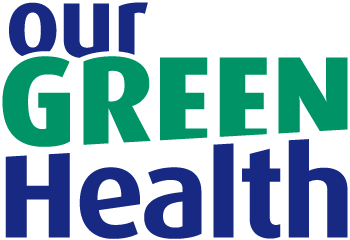

Hi, what an amazing article! I didn’t know all this information about the harmfulness of milk. Everyone recommends it as a necessary food in the diet. Even doctors. Especially yogurt.
I personally have a lot of stomach problems, especially when I drink milk. After cheese and other dairy products not but after a glass of milk, I feel discomfort and bloating. I didn’t believe that milk was the cause of my stomach problems. Now, after this article, I understand what the problem is. I need to switch to alternatives like almond and coconut milk and include as many fruits and grains as possible in my diet. The only problem is that in our country that type of milk is much more expensive, but it is not important for health.
This about soy also amazed me! Is it possible that it is so unhealthy… I will not eat it again ever. Thank you for this article that helped me understand some things that were hidden from me and to regulate my diet in order to improve my health.
Keep helping people with such useful articles!
Greetings,
Danijela
Hi Danijela,
Thank you for your comment and compliments. The food industry is never very honest about the impact of their products on human bodies. This is partly due to their ignorance, they just don’t know what these effects are, and partly due to their not so very honest attitudes.
For many years I’ve been investigating food and food products, and the food industry. It’s amazing how they keep on pushing unhealthy products and destroying the environment in the same stroke. It’s incredible how people keep up with all their lies and destructive attitude and activities.
The problem with soy is that it’s not just unhealthy. The production of soy is responsible for 80% of the criminal destruction of tropical forests and the genocide on indigenous people who live in and from those forests. The food industry doesn’t care.
This is why we, as consumers, have to change our attitudes. We need to stop buying all those unhealthy and eco-unfriendly products.
For now, stay safe, stay healthy.
Regards,
Tom
Interesting information about GHG, didn’t know that. Some people say that we should follow the animals’ life – drink milk when you’re young, then completely abandon it.
However, I adore cow’s milk, and I drink it daily, both in my coffee and plain milk. I’m the kind of person who likes to eat everything. In my opinion, milk isn’t so bad (when we are not exaggerating). I always try to burn all the calories I put into my body. I like to consume everything nature offers me. Is that healthy? Maybe not, but I’m that kind of a person.
I never had any allergies or intolerance to lactose or something like that, and I hope it’ll stay that way, haha.
Hi Petar,
Thank your for your comment. I am very happy for you that you don’t have any allergies or lactose intolerance. It’s also good to read that you adore milk.
Are you sure, however, whether the milk comes from a cow? In The Netherlands, as well as here in Spain, most milk comes from the factory! Never seen any cows in those factories. 😉
That you like every type of food is very good. But you should pay perhaps more attention to the combination of the foods you eat. The problem with milk is that it sticks to the inside of our intestines, hampering the digestion of other food. In this way it’s easy to eat everything and to burn your calories. Half of the food goes down the drain without ever been properly digested.
And there is another, more serious problem with the consumption of milk: it explains snoring. The milk also sticks inside your throat, disabling proper breathing.
For now, stay safe, stay healthy.
Regards,
Tom
Hi Tom, Thank you for your interesting article. I enjoyed reading it very much.
You are right that the milk from cows is doing more harm than any good. We can’t digest the lactose and casein due to the deficiency of the enzyme lactase, which we lose growing up. Anyway, we are made to thrive on human milk as a baby and not on cow’s milk, where the growth hormone is for the calves, not for us.
I still know the time they proclaimed that milk is an excellent supplier of calcium, which is not true. We have a far better supply by eating green leafy vegetables, like cabbage, kale. Osteoporosis is so bad in the western world because we eat the wrong food and avoid sunshine. Vitamin D3 helps together with Vitamin K2 and Magnesium to bring calcium into the bones. The imbalance is because we eat too much sugar, which robs magnesium, and the avoidance of sunshine(Vitamin D3), including the lack of moving the body, doesn’t help either. Vitamin K2 is important to prevent the calcification of the blood vessels. If we eat a healthy diet containing many vegetables and some fruits we wouldn’t have these problems.
Cows fart because they get fed with the wrong food, like corn and soy, which their stomachs parts can’t digest. If they ate grass, they wouldn’t fart so much, and they wouldn’t need so many antibiotics due to becoming ill. It is a vicious cycle that needs to be broken.
I don’t eat any milk products, but my husband is a Dutch citizen and consumes a lot of cheese, milk, and yogurt, which is not good.
I think no adult should consume any cow’s or other animal’s milk products, but sometimes eating some raw milk cheese is not that bad if we consume mainly healthy food. 🙂
Great article! Thank you very much!
Hi Sylvia,
Thank you very much for your comment and compliments.
Yesterday I bought a large piece of queso de cabra (goat’s cheese) from the organic shop here in the village. Not for myself, but for Hannie. She eats cheese. I don’t, because it causes fungus between my toes and behind my ears.
It took me quite some time to find out that it was milk, cheese, and yogurt that caused this problem. Some ten years ago I stopped eating milk products. From then on, I had no fungus problems anymore. By the way, the cheese I bought yesterday tastes wonderful. Just a little piece of cheese, once a month, will not cause too much fungus.
For years on end, the Dutch government organized national campaigns on radio and television to promote milk. When they stopped this type of promotion, the consumption of dairy products gradually declined. However, this decline is probably due to rising awareness of the negative sides of dairy, and a rise in alternatives.
For farmers who converted to organic during this period, this is not that pleasant. Fortunately, the demand for organic dairy rose, most specifically in Germany, in contrast to the decline of conventional dairy.
Staying healthy is quite an effort. However, what’s most frustrating is the fact that in debates people often don’t appreciate any alternative arguments. We need a lot of patience.
For now, stay safe, stay healthy.
Regards,
Tom